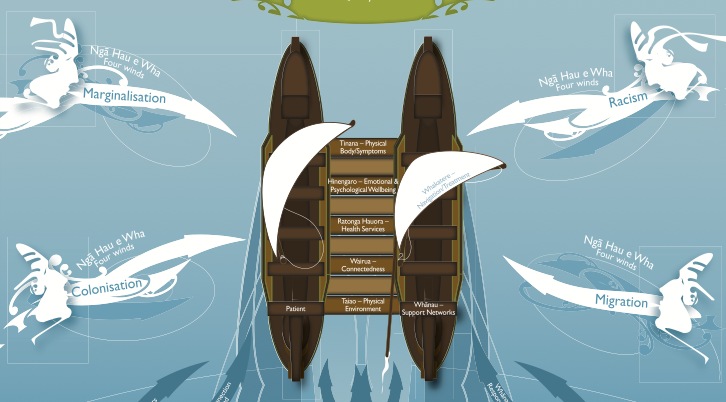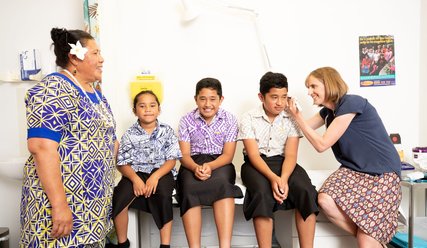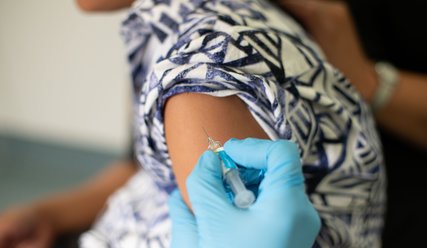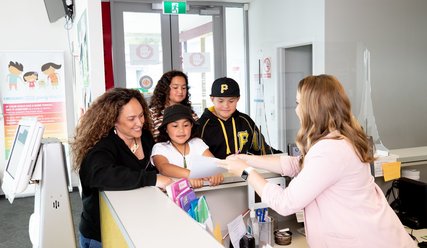The Meihana Model
When Māori left their ancestral homeland of Hawaiki to voyage to Aotearoa it was waka they travelled in. A doubled-hulled voyaging canoe, which is one type of waka that tūpuna (ancestors) journeyed on across the Pacific Ocean, is the central symbol for The Meihana Model, a clinical assessment tool for engaging with Māori.
The Meihana Model was described by Dr Kēri Rātima, GP and Pou Whirinaki of The Royal New Zealand College of General Practitioners to General Practice Education Programme (GPEP) year 1 registrars at Te Ahunga (the orientation) in Hastings in February 2021 (pictured below). As a clinical assessment tool, it goes hand in hand with the Hui process, which is a method of engaging with Māori patients but can also be used more widely.
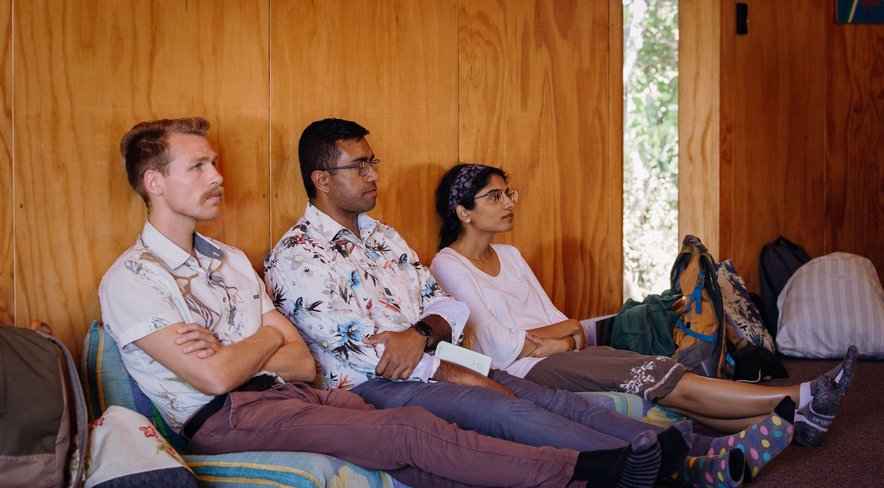
Over its development, The Meihana Model has centered whānau at the heart of the assessment and intervention processes. That is an act that is fundamentally Māori; the patient is not an individual but a part of a collective, whether that be whānau, hapū, or iwi and the model challenges GPs to engage with, and use, the wider family or community members as crucial parts of the diagnostic and prescription process.
The Model uses the five cross bars of the waka haurua to create a connection between ‘patient’ and ‘whānau’ (a patient’s support networks). These are:
- Tinana: physical wellbeing
- Hinengaro: consciousness and awareness
- Iwi Katoa: wider support
- Wairua: spiritual wellbeing
- Taiao: environmental wellbeing
To use The Meihana Model in their practice, the registrars would have to have a clear understanding of cultural safety and cultural competency before they could effectively use it. The spirit of employing the model is to gain better health outcomes for Māori patients, which means having a deep understanding to avoid an oversimplified approach.
It also means ensuring each health practitioner is part of the solution to enable equitable outcomes for Māori patients and their whānau.
